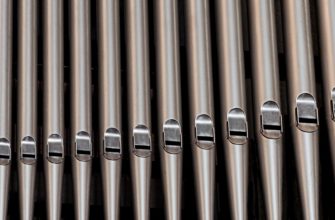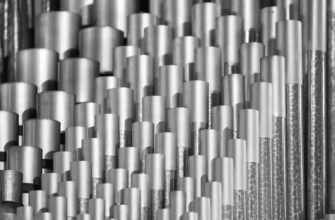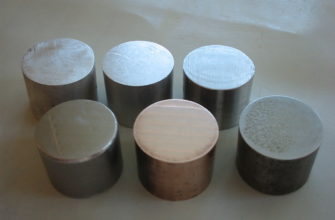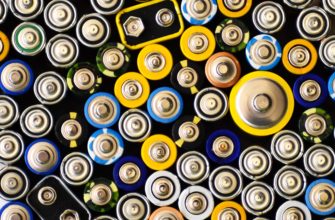Aluminum alloys are widely used in various industries due to their excellent mechanical properties. In this article, we will dive deep into the mechanical properties of four popular aluminum alloys: 6061, 6063, 6082, and 7075. Understanding these properties is crucial for engineers and manufacturers in order to select the most suitable alloy for their specific applications.
One of the key properties of aluminum alloys is their tensile strength, which determines the maximum load a material can withstand before it fails under tension. The 6061 alloy exhibits a tensile strength of around 310 MPa, while the 6063 alloy has a slightly lower tensile strength of approximately 185 MPa. On the other hand, the 6082 alloy offers a higher tensile strength of about 295 MPa, and the 7075 alloy boasts an impressive tensile strength of around 572 MPa. These varying strengths make each alloy suitable for different applications where strength is a crucial factor.
| Aluminum Alloy | Tensile Strength (MPa) |
|---|---|
| 6061 | 310 |
| 6063 | 185 |
| 6082 | 295 |
| 7075 | 572 |
Another important property of aluminum alloys is their shear strength, which determines the resistance of the material to deformations caused by applied shear forces. Both the 6061 and 6063 alloys exhibit similar shear strengths, around 207 MPa and 172 MPa, respectively. The 6082 alloy offers a higher shear strength of about 230 MPa, while the 7075 alloy surpasses the others with a shear strength of approximately 331 MPa. These values indicate the ability of each alloy to withstand shear forces, making them suitable for applications where shear resistance is critical.
6061 Aluminum Alloy
One of the most widely used aluminum alloys is 6061. It is known for its high strength-to-weight ratio, making it suitable for structural applications. The tensile strength of 6061 aluminum alloy is typically around 40,000 psi to 45,000 psi, providing excellent resistance to deformation and fracture. Moreover, it has a high yield strength, which is the maximum amount of stress that can be applied to the material without causing permanent deformation. The pure aluminum yield strength is known for its exceptional corrosion resistance and low density.
Additionally, the 6061 alloy exhibits good elongation properties, allowing it to undergo significant plastic deformation before failure. This property is crucial in applications where the material needs to be shaped or formed. The hardness of 6061 aluminum alloy is often measured using the Vickers hardness test.
6063 Aluminum Alloy
Similar to 6061, 6063 aluminum alloy is renowned for its excellent tensile strength and high resistance to deformation. It is commonly used in architectural and structural applications due to its good weldability. With its moderate strength and good corrosion resistance, 6063 is favored for extruded products such as window frames and heat sinks. The composition of 6063 aluminum alloy typically consists of approximately 97.5% aluminum, 0.6% silicon and 1.0% magnesium.
Important: The ultimate tensile strength for aluminium 6063 is typically around 40,000 psi to 45,000 psi.
Note: The mechanical properties and weldability of aluminium alloys can be affected by their specific composition and processing conditions.
6082 Aluminum Alloy
As an alloy that belongs to the 6xxx series, 6082 is well-suited for structural applications that demand high strength and good weldability. It offers comparable mechanical properties to 6061 aluminum alloy, including excellent tensile strength and elongation. The 6082 T6 properties refer to its heat-treated condition, where the alloy undergoes solution heat treatment and artificial aging. This treatment further improves the mechanical properties and hardness of this material.
Important: The yield strength of aluminium alloy 6082 T6 is known to be 15% higher than that of 6061 alloy.
7075 Aluminum Alloy
The 7075 aluminum alloy is regarded as one of the strongest aluminum alloys among others. It demonstrates exceptional tensile strength and has a high resistance to fatigue, making it suitable for applications in the aerospace industry. The mechanical properties of 7075 aluminum alloy are achieved by a combination of alloying elements, including zinc, magnesium and copper. Its yield strength is typically much higher than that of 6061 and 6063 alloys.
Important: The yield strength of aluminium 7075 is known to be 70% higher than that of 6061 alloy.
In conclusion, each of these aluminum alloys has its own distinct set of mechanical properties that make them suitable for a wide range of applications. Understanding these properties is crucial in selecting the right alloy for specific application, ensuring optimal performance and safety.

Fundamentals of Aluminum Alloys
Aluminum alloys are widely used in various industrial areas due to their excellent properties and versatility. Three commonly used aluminum alloys are AL 6063, AL 6082 and AL 7075.
- AL 6063: AL 6063 has good formability and corrosion resistance, making it ideal for architectural and decorative applications. It has a tensile strength of around 200 MPa and a yield strength of approximately 150 MPa. The alloy is known for its good extrudability, allowing it to be formed into different profiles and shapes.
- AL 6082: AL 6082 is a high-strength alloy with excellent machinability and weldability. It is commonly used in structural applications, such as bridges and machine components. The yield strength of AL 6082 is around 240 MPa, and it has a Vickers hardness of approximately 95 HV. This alloy is known for its good combination of strength and corrosion resistance.
- AL 7075: AL 7075 is a high-strength alloy with excellent mechanical properties. It is frequently used in aerospace and military applications due to its high strength-to-weight ratio. AL 7075 has a tensile strength of approximately 570 MPa and a yield strength of around 500 MPa. It also has a high Vickers hardness of approximately 150 HV.
Pure aluminum has a yield strength of approximately 35 MPa, while its ultimate tensile strength (UTS) is around 75 MPa. The addition of alloying elements enhances the mechanical properties of aluminum.
Compressive strength and fracture toughness are also important considerations, depending on the intended use of the alloy. For example, AL 5083 is known for its high fracture toughness, which makes it suitable for marine applications.

Key Aluminum Alloys: Properties and Characteristics
Here, we will discuss the properties and characteristics of some key aluminum alloys including 6061, 6063, 6082, and 7075.
Mechanical Properties
- Aluminium UTS (ultimate tensile strength) represents the maximum stress an alloy can withstand before failure occurs.
- Compression strength of aluminum refers to its ability to withstand compressive forces.
- Aluminium Vickers hardness measures the resistance to indentation under a specified load.
- Mechanical properties of 6061 aluminum include high tensile strength, good corrosion resistance, and excellent weldability.
- Al 7075 composition consists of high levels of zinc and copper, giving it exceptional strength and hardness.
- Al 6082 material properties include good machinability, high tensile strength and excellent corrosion resistance.
- 6063 aluminum properties include moderate strength, good weldability and high corrosion resistance.
- 5052 aluminum material properties include high fatigue strength, excellent workability and good corrosion resistance.
- Al 5083 properties include high resistance to marine environments, good weldability and outstanding strength.
- Al 6063 composition consists of magnesium and silicon, providing good extrudability and surface finish.
- Aluminium fracture toughness represents its ability to resist the growth of cracks.
- 6082 T6 properties indicate that it has been precipitation hardened for enhanced strength.
- A356 aluminum properties include good castability, excellent thermal conductivity and high strength.
- Aluminium 6061 mechanical properties include high tensile strength, good fatigue resistance and excellent machinability.
- Aluminium 7075 hardness is one of the highest among aluminum alloys, making it suitable for applications requiring exceptional strength.
- Weldability of aluminium alloys varies depending on the specific composition and heat treatment.

Mechanical Properties Analysis
When it comes to analyzing the mechanical properties of aluminum alloys, several factors need to be considered. The properties of interest include the yield strength, ultimate tensile strength, fracture toughness, and young’s modulus, among others. Here, we will delve deeper into the mechanical properties of four specific aluminum alloys: 6082 T6, A356, 6061, 6063, and 7075.
6082 T6
6082 T6 is a commonly used aluminum alloy with impressive mechanical properties. It has a high ultimate tensile strength of around 310 MPa and a yield strength of approximately 260 MPa. Additionally, it exhibits good fracture toughness and an impressive yield strength. These properties make 6082 T6 a popular choice in applications requiring high-strength materials, such as aerospace and automotive industries.
6061 and 6063
6061 and 6063 are two other widely used aluminum alloys. Both alloys have similar mechanical properties, with a yield strength of around 240 MPa and an ultimate tensile strength of approximately 280 MPa. However, there is a slight difference in their composition and properties. 6061 has higher alloying elements, which provide it with better strength and corrosion resistance compared to 6063. On the other hand, 6063 has better extrudability, making it a preferred choice in applications that require complex shapes and profiles, such as architectural and marine applications.
7075
7075 is one of the strongest aluminum alloys available, commonly used in aerospace and military applications. It has a high ultimate tensile strength of around 570 MPa and a yield strength of approximately 480 MPa. Additionally, it exhibits good fracture toughness and excellent fatigue resistance. These exceptional properties, combined with its lightweight nature, make 7075 an ideal choice for structural components in high-performance applications.

Specific Alloy Analysis
When it comes to understanding the mechanical properties of aluminum alloys, it’s important to analyze specific alloys in detail. One such alloy is 6082 T6, which offers a combination of good mechanical properties and excellent corrosion resistance. It has a tensile strength of 295 MPa and a yield strength of 240 MPa, making it suitable for various applications in industries such as automotive and aerospace.
Another alloy worth examining is A356, known for its high strength and excellent casting characteristics. It has a tensile strength of 280 MPa and a yield strength of 215 MPa. A356 exhibits good ductility and impact resistance, making it a popular choice for structural components in the automotive and marine industries.
| Alloy | Tensile Strength (MPa) | Yield Strength (MPa) | Hardness (HB) |
|---|---|---|---|
| 6082 T6 | 295 | 240 | 95 |
| A356 | 280 | 215 | 95 |
| 7075 | 570 | 505 | 150 |
| 6061 T6 | 310 | 275 | 95 |
Another widely used aluminum alloy is 7075, which is known for its high strength-to-weight ratio and excellent fatigue resistance. It has a tensile strength of 570 MPa and a yield strength of 505 MPa, making it suitable for applications in the aerospace and defense industries. With a high hardness of 150 HB, it offers good wear resistance as well.

Tensile Strength and Hardness
The tensile strength and hardness of aluminum alloys are important mechanical properties that determine their overall performance and suitability for various applications. Two commonly used aluminum alloys, 6061 and 7075, exhibit different levels of tensile strength and hardness due to variations in their composition and heat treatment processes.
Aluminum alloy 6061, known for its excellent weldability and good corrosion resistance, has a relatively high tensile strength and hardness. It has a yield strength of around 276 MPa, which is the amount of stress a material can withstand before it starts to deform permanently. In terms of hardness, it ranges from 95 to 97 on the Brinell hardness scale, indicating its resistance to indentation and wear.
In contrast, aluminum alloy 7075, often used in aerospace applications, has significantly higher tensile strength and hardness compared to 6061. With a yield strength of approximately 503 MPa, it offers exceptional strength and structural integrity. Its hardness measures around 150 on the Brinell scale, making it much more resistant to deformation and external forces.
| Aluminum Alloy | Yield Strength (MPa) | Hardness (Brinell) |
|---|---|---|
| 6061 | 276 | 95-97 |
| 7075 | 503 | 150 |
It’s important to note that the tensile strength and hardness of aluminum alloys can be further improved through heat treatment processes, such as T6 treatment. Aluminum alloy 6082, for example, exhibits enhanced mechanical properties with T6 treatment, including increased tensile strength and hardness.

Comparative Analysis
When it comes to understanding the mechanical properties of aluminum alloys, a comparative analysis can provide valuable insights into the differences between various alloys. In this analysis, we will focus on the compression strength, material properties, hardness, shear strength, ultimate tensile strength (UTS), fracture toughness and yield strength of four popular aluminum alloys: 6061, 6063, 6082, and 7075.
Starting with compression strength, aluminum alloy 6082 stands out with its excellent performance, boasting a high compressive strength of al 6082 material properties. This makes it a preferred choice for applications requiring high load-bearing capabilities. On the other hand, aluminum alloy 6061 offers a good balance between strength and weight, making it suitable for a wide range of applications in various industries.
When it comes to hardness and mechanical properties, aluminum alloy 7075 shines. It is known for its high hardness, which makes it ideal for applications where strength and toughness are required. Additionally, it exhibits impressive mechanical properties, such as al 7075 mechanical properties, making it a dependable choice for aerospace and automotive applications.
| Property | Alloy 6061 | Alloy 6063 | Alloy 6082 | Alloy 7075 |
|---|---|---|---|---|
| Shear Strength | aluminum shear strength | N/A | Shear strength of 6082 | al 7075 hardness |
| Ultimate Tensile Strength (UTS) | aluminium alloy mechanical properties | mechanical properties of 6061 aluminum | mechanical properties of 6082 aluminum | 7075 aluminum mechanical properties |
| Fracture Toughness | hardness of 6061 aluminum | N/A | aluminium fracture toughness | N/A |
| Yield Strength | aluminium alloy yield strength | N/A | en aw 6082 t6 mechanical properties | N/A |
Overall, it is clear that each aluminum alloy has its own unique set of properties that make it suitable for specific applications. While 6061 and 6082 offer a good balance between strength and weight, 7075 stands out with its high hardness and mechanical properties. Engineers and manufacturers need to carefully consider these properties when selecting the most appropriate aluminum alloy for their specific needs.

Aluminum alloys, such as 6061, 6063, 6082, and 7075, have a wide range of applications and are extensively used in various industries due to their unique mechanical properties. One of the commonly considered factors in selecting these alloys for specific applications is their ultimate tensile strength. Aluminum 6061 T6, for example, has a high tensile strength of approximately 310 MPa, making it suitable for applications that require high structural integrity, such as aerospace components, bicycle frames and automotive parts.
Applications and Industrial Use
Aluminum 6082 T6, with its excellent strength and corrosion resistance, is commonly used in construction, railway and marine industries for structural components, such as beams, trusses and boat hulls. Furthermore, aluminum 7075, characterized by its high strength, low density and excellent fatigue resistance, finds extensive applications in the aerospace industry for manufacturing aircraft structures, such as wings, fuselage components and landing gears.
- Aluminum A356, known for its excellent castability and good mechanical properties, is widely used in the automotive industry for manufacturing engine components, cylinder heads, and transmission cases.
- Additionally, aluminum alloys, such as 6063, are commonly used in architectural applications for extruded profiles, window frames, and door systems, thanks to their good formability, anodizing capabilities, and aesthetic appearance.
Weldability and Fracture Toughness
The weldability of an aluminium alloy refers to its ability to be joined using various welding techniques, while fracture toughness measures its resistance to crack propagation and brittle fracture.
When it comes to weldability, aluminium alloys such as 6061, 6063, 6082 and 7075 exhibit good weldability due to their low melting points and high thermal conductivity. This makes them suitable for various welding methods, including TIG (tungsten inert gas) and MIG (metal inert gas) welding. However, it should be noted that certain factors, such as the presence of impurities and the choice of filler material, can affect the weldability of these alloys.
In terms of fracture toughness, aluminium alloys generally have good toughness properties due to their ability to deform plastically. The fracture toughness of an aluminium alloy is influenced by factors such as alloy composition, heat treatment and manufacturing process. For example, alloys like 6082 and 7075 have higher fracture toughness compared to pure aluminium due to the presence of alloying elements and their specific heat treatment processes.

Conclusion
After analyzing the mechanical properties of various aluminum alloys, including 6061, 6063, 6082 and 7075, several key findings can be concluded.
Firstly, the 7075 aluminum alloy exhibits excellent mechanical properties, including high yield strength and tensile strength. This makes it a suitable choice for applications requiring strong and durable materials. On the other hand, the 5052 aluminum alloy has lower mechanical properties compared to the other alloys mentioned.
Secondly, the EN AW 6082 T6 aluminum alloy exhibits favorable mechanical properties, including high yield strength and good weldability. These properties make it a popular choice for structural applications that require both strength and the ability to be easily welded.
Finally, the A356 aluminum alloy has lower mechanical properties compared to the other alloys discussed. However, it offers good castability and is commonly used in the automotive industry for casting applications.
| Alloy | Yield Strength | Tensile Strength | Fracture Toughness | Elongation | Hardness |
|---|---|---|---|---|---|
| 6061 | High | High | Moderate | Good | Varies |
| 6063 | Moderate | Moderate | Moderate | Moderate | Varies |
| 6082 | High | High | Moderate | Good | Varies |
| 7075 | High | High | High | Low | Varies |
| 5052 | Low | Low | Moderate | High | Varies |
In conclusion, the mechanical properties of aluminum alloys vary depending on the specific alloy composition and heat treatment. The 7075 aluminum alloy stands out for its high strength, while the EN AW 6082 T6 aluminum alloy offers a combination of strength and weldability. The A356 aluminum alloy is known for its castability but has lower mechanical properties. It is important to consider the specific requirements of the application when choosing an aluminum alloy for a particular use.










